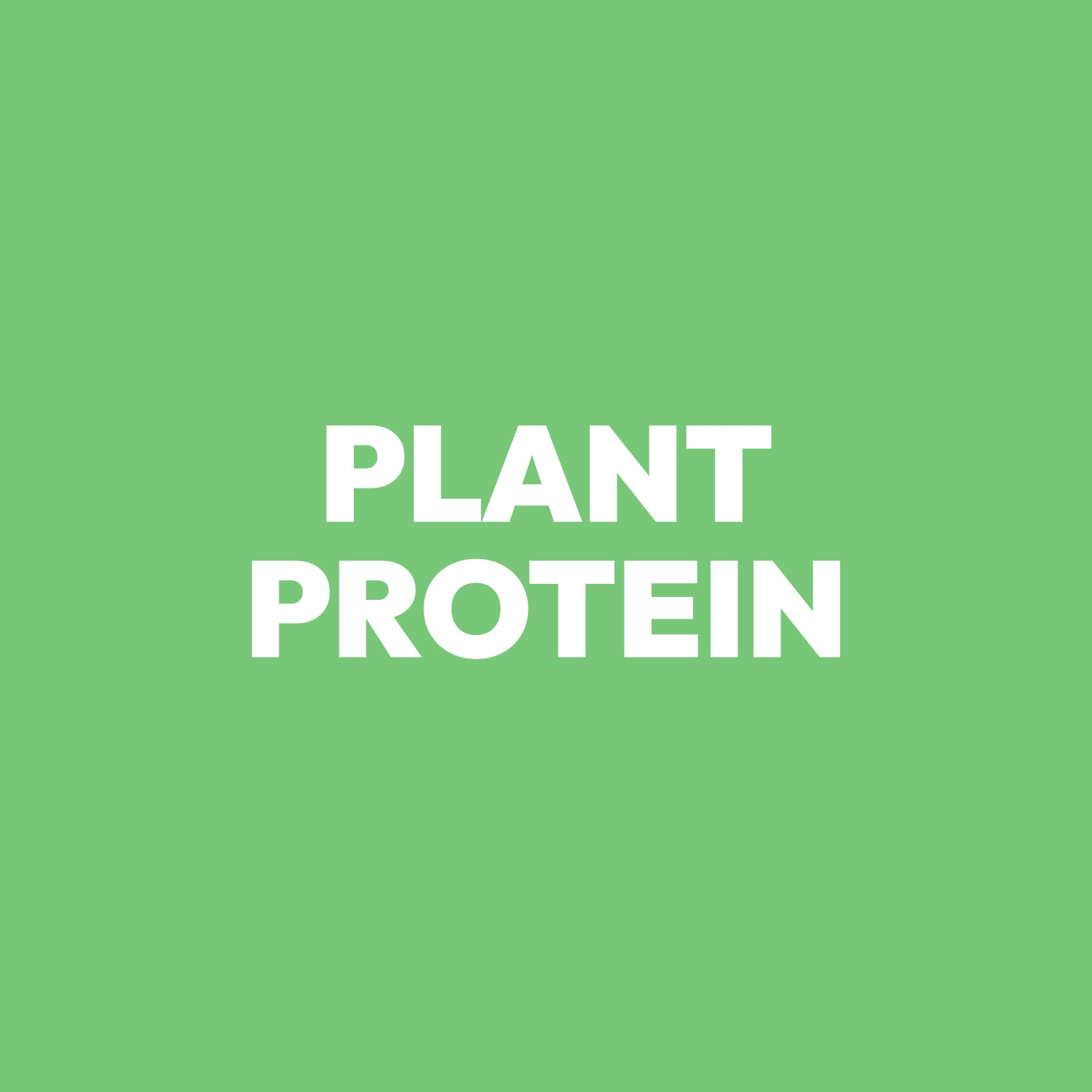

Protein Powder After Running: Complete Recovery Guide for Runners
Every runner knows that post-workout recovery is just as crucial as the training itself. While you might focus on stretching, hydration, and rest, there’s another critical component that could dramatically improve your recovery: protein powder after running. Research suggests that strategic protein consumption can reduce muscle soreness, accelerate repair, and help you bounce back faster for your next training session.

👉 Discover our plant protein powders
The science behind post-run nutrition has evolved significantly over the past two decades. While endurance athletes once focused solely on carbohydrate replenishment, we now understand that protein plays an equally vital role in recovery and adaptation. Whether you’re a weekend warrior logging 20 miles per week or a competitive runner training twice daily, understanding when, how, and why to use protein powder can transform your recovery strategy.
In this comprehensive guide, we’ll explore the evidence-based approach to post-run protein supplementation, helping you make informed decisions about your sports nutrition strategy. From optimal timing windows to choosing the best protein powder for your specific needs, we’ll cover everything you need to know to maximise your recovery and performance.
Should You Take Protein Powder After Running?
The short answer is yes—protein powder after running can significantly improve muscle recovery and reduce soreness when consumed within 30-90 minutes post-run. However, the decision isn’t black and white and depends on several factors specific to your training and lifestyle.
Protein powder becomes most beneficial after runs lasting over 60 minutes or high-intensity training sessions where muscle protein breakdown exceeds synthesis. During these demanding workouts, your muscles experience microscopic damage that requires essential amino acids for proper repair. The nine essential amino acids your body cannot produce on its own must come from dietary sources, making protein intake crucial for recovery.

👉 Discover our plant protein powders
The timing factor is particularly important. Protein powder is essential if your next meal is more than 2-3 hours away from your run. This extended gap between exercise and food intake can prolong the catabolic state, where muscle breakdown continues without adequate raw materials for repair.
However, protein powder isn’t necessary after every easy run if you’re eating balanced meals throughout the day. A leisurely 3-mile jog followed by a well-rounded breakfast within an hour provides sufficient nutrients for recovery without additional supplementation.
When you do opt for protein powder, aim for a serving that contains 20-25 grams of high-quality protein for optimal muscle protein synthesis. This amount provides enough amino acids to maximally stimulate the muscle-building process without waste.
Optimal Timing for Post-Run Protein Powder
The concept of nutrient timing has been refined through decades of research, and the optimal window for consuming protein powder after running is more flexible than once believed. While the traditional “anabolic window” was thought to be just 30 minutes, current research shows this window extends up to 2-3 hours post-exercise.
For maximum benefit, consume your protein shake within 30-90 minutes after completing your run. This timeframe aligns with your body’s heightened sensitivity to amino acids and insulin, creating an ideal environment for muscle protein synthesis and glycogen replenishment.

👉 Discover our plant protein powders
Special considerations apply to different running scenarios. If you ran fasted—perhaps an early morning run before breakfast—prioritise protein intake within 60 minutes. Your muscles have been in a catabolic state since your last meal, making prompt protein consumption even more critical for halting muscle breakdown and initiating repair processes.
After long runs lasting 90 minutes or more, combine your protein powder with carbohydrates in a 3:1 or 4:1 ratio (carbs to protein). This combination optimises glycogen stores replenishment while providing the necessary building blocks for muscle repair. For example, mix your 25-gram protein serving with 75-100 grams of carbohydrates from sources like banana, berries, or maltodextrin.
For evening runs, protein powder can support overnight muscle recovery. Casein protein or a slow-digesting protein blend consumed before bed provides a steady stream of amino acids throughout the night, supporting the repair processes that occur during sleep.
How Much Protein Powder After Running
Determining the right amount of protein powder after running requires understanding both your immediate post-exercise needs and your total daily protein intake. The optimal serving for muscle protein synthesis is 20-25 grams of protein per serving, regardless of your body weight.
This recommendation is based on research showing that muscle protein synthesis reaches its maximum stimulation at approximately 20-25 grams of high-quality protein. Consuming more than this amount in a single serving doesn’t provide additional muscle building benefits and may simply be oxidised for energy or stored as fat.

👉 Discover our plant protein powders
Your total daily protein target depends on your training volume and intensity. Recreational runners logging under 10 hours per week should aim for 0.8-1.2 grams of protein per kilogram of body weight daily. This range supports basic recovery needs without excessive intake.
Serious runners training 10+ hours per week require higher protein intake of 1.2-2 grams per kilogram of body weight daily. This increased requirement reflects the greater muscle stress and recovery demands of high-volume training.
Let’s break this down with a practical example. A 150-pound (68 kg) runner would need approximately:
-
Post-run serving: 20-25 grams immediately after training
-
Daily total (recreational): 54-82 grams per day
-
Daily total (competitive): 82-136 grams per day
Remember that consuming more than 40 grams of protein in one sitting provides no additional muscle building benefits. Your body can only utilize a certain amount for muscle protein synthesis at once, making frequent, moderate servings more effective than large, infrequent doses.
Best Types of Protein Powder for Runners
Choosing the right type of protein powder can significantly impact your recovery and performance. Different protein sources offer unique advantages, and understanding these differences will help you select the most appropriate option for your needs.
Whey protein isolate stands as the gold standard for post-run recovery. With fast absorption rates and a complete amino acid profile containing all nine essential amino acids, whey protein isolate delivers 90%+ protein content with minimal lactose and fat. The high leucine content—approximately 2.5 grams per 25-gram serving—makes it particularly effective at stimulating muscle protein synthesis.
Whey protein concentrate offers a good balance of protein quality and cost-effectiveness. While slightly less refined than isolate, concentrate still provides excellent amino acid profiles and may be more suitable for runners on a budget. However, it may contain lactose, which could cause digestive issues for sensitive individuals.
Plant-based protein blends have gained popularity among runners seeking dairy-free alternatives. Combining pea, hemp, and rice proteins creates a complete amino acid profile comparable to animal-based proteins. These blends often provide additional fiber and antioxidants, which may support immune system function and reduce exercise-induced inflammation.
Casein protein offers unique benefits for specific situations. Its slow digestion rate makes it ideal for evening runs or overnight recovery, providing a sustained release of amino acids for up to 7-8 hours. This makes casein particularly valuable for runners who train late in the day or want to support recovery during sleep.
When selecting any protein powder, avoid products with excessive added sugars, artificial fillers, or substances banned by athletic organizations. Focus on products with minimal, recognizable ingredients and third-party testing for purity.
Whey vs Plant-Based for Runners
The choice between whey proteins and plant-based options often comes down to individual preferences, dietary restrictions, and specific performance goals. Both can effectively support post-run recovery when chosen and used appropriately.
Whey protein offers several advantages for runners. Its higher leucine content—the primary amino acid responsible for triggering muscle protein synthesis—makes it slightly more effective gram-for-gram at stimulating muscle repair. The faster absorption rate means amino acids reach your muscles more quickly after consumption, potentially optimising the post-exercise recovery window.
👉 Check this article about plant protein vs whey protein
Plant-based proteins bring their own unique benefits. Beyond being suitable for vegans and those with lactose intolerance, plant proteins often contain additional fiber, antioxidants, and phytonutrients that may support overall health and immune function. Some runners report easier digestion and less gastrointestinal distress with plant-based options.
Soy protein deserves special mention as a complete protein that’s comparable to whey for muscle building purposes. It contains all essential amino acids in adequate proportions and has been shown to support muscle protein synthesis effectively in multiple studies.
Pea protein blends, particularly when combined with rice protein, offer high concentrations of branched chain amino acids and often provide easier digestion than pure pea protein. The earthy taste that some find off-putting in pure pea protein is typically masked in well-formulated blends.
Benefits of Protein Powder After Running
Understanding the specific benefits of protein powder after running can help you make informed decisions about when and how to incorporate it into your nutrition strategy. These benefits extend beyond simple muscle building to encompass multiple aspects of recovery and adaptation.
Accelerated muscle repair represents the primary benefit of post-run protein consumption. Running, particularly longer distances or higher intensities, creates microscopic tears in muscle fibers. The amino acids from protein powder provide the essential building blocks needed to repair this damaged tissue and build it back stronger. This process directly contributes to improved athletic performance over time.

👉 Discover our plant protein powders
Reduced muscle soreness, particularly delayed onset muscle soreness (DOMS), occurs 24-48 hours post-run when adequate protein is consumed. Studies show that runners who consume protein powder after training report significantly less muscle soreness compared to those relying on carbohydrates alone. This reduction in soreness allows for more consistent training and better workout quality in subsequent sessions.
Enhanced glycogen replenishment occurs when protein is combined with carbohydrates post-exercise. While carbohydrates remain the primary fuel for glycogen restoration, the addition of protein can improve the rate and extent of glycogen storage, particularly important for runners training multiple times per day or on consecutive days.
Improved training adaptation and strength gains develop over time with consistent post-run protein consumption. The enhanced recovery and reduced muscle breakdown allow for more effective adaptations to training stimuli. This leads to improved running economy, increased endurance capacity, and greater resilience to training stress.
Convenience represents a practical benefit that shouldn’t be overlooked. Protein powder provides a portable, shelf-stable option for immediate post-run nutrition when whole food meals aren’t practical. This is particularly valuable during races, training camps, or when running away from home.
When You Don’t Need Protein Powder After Running
While protein powder offers clear benefits in many situations, there are times when it’s unnecessary or potentially counterproductive. Understanding these scenarios can help you avoid unnecessary supplementation and focus on whole food nutrition when appropriate.
Easy runs under 45 minutes followed by a balanced meal within 2 hours typically don’t require additional protein supplementation. These lower-intensity, shorter-duration efforts create minimal muscle damage and don’t deplete protein stores significantly. Your regular meals provide adequate nutrients for recovery from these sessions.

👉 Discover our plant protein powders
If you consumed adequate protein 2-3 hours before running, additional post-run protein may be unnecessary, especially for shorter runs. The amino acids from your pre-run meal continue circulating in your bloodstream for several hours, providing ongoing support for muscle protein synthesis without additional supplementation.
When whole food sources are readily available and preferred, they often provide superior nutrition compared to protein powder. A balanced meal containing high quality protein, carbohydrates, healthy fats, and essential nutrients offers more comprehensive nutritional support than isolated protein powder.
During base-building phases characterised by low-intensity, high-volume training, the muscle damage and protein requirements are typically lower. These periods focus on aerobic adaptations rather than muscle building, making consistent daily protein intake through regular meals more important than immediate post-run supplementation.
Recovery runs where muscle stress is minimal rarely require additional protein beyond normal dietary intake. These easy-paced efforts are designed to promote blood flow and aid recovery without creating additional muscle damage that would necessitate supplemental protein.
How to Choose Quality Post-Run Protein Powder
Selecting a high-quality protein powder requires careful evaluation of several key factors that ensure safety, effectiveness, and value. The supplement industry is largely unregulated, making it crucial to choose products from reputable manufacturers with rigorous quality control standards.
Look for NSF Certified for Sport or Informed Sport certification as your first quality indicator. These third-party certifications test products for banned substances and verify that what’s on the label matches what’s in the container. This is particularly important for competitive runners subject to drug testing.
Ensure the product contains a minimum of 20 grams of protein per serving with a complete amino acid profile. The label should clearly list the amounts of essential amino acids, particularly leucine, which should be present at 2-3 grams per serving for optimal muscle protein synthesis stimulation.

👉 Discover our plant protein powders
Avoid products with proprietary blends that hide actual protein amounts behind vague terms like “protein matrix” or “recovery blend.” Transparent labeling allows you to verify you’re getting adequate amounts of the specific proteins you’re paying for.
Choose reputable brands with third-party testing for purity and potency. Look for companies that voluntarily test for heavy metals, microbial contamination, and pesticide residues. This information should be readily available on the company’s website or upon request.
Read ingredient lists carefully for artificial additives, fillers, or potential allergens. High-quality protein powders should have relatively short ingredient lists with recognisable components. Avoid products with excessive artificial colours, flavours, or sweeteners that may cause digestive issues.
Key Quality Indicators
Several specific indicators can help you identify truly high-quality protein powders among the overwhelming number of options available in the market.
Clear labeling of protein content per serving should be prominently displayed without confusing marketing language. The label should specify the type of protein (whey isolate, concentrate, etc.) and the exact amount, not just total powder weight.
Minimal ingredient lists with recognisable components indicate a focus on quality over marketing appeal. The best protein powders often contain just protein, natural flavours, and perhaps a natural sweetener, without unnecessary fillers or artificial additives.
Third-party testing for heavy metals and contaminants should be verifiable through certificates of analysis available on the manufacturer’s website. This testing should include lead, mercury, cadmium, and arsenic levels, which can accumulate in poorly sourced or processed proteins.
Good manufacturing practices (GMP) certification ensures the facility meets pharmaceutical-grade standards for cleanliness, quality control, and consistency. This certification is typically displayed on product labels or company websites.
Positive reviews from other endurance athletes, particularly those with similar training goals and dietary needs, provide real-world validation of the product’s effectiveness and tolerability. Look for detailed reviews that discuss taste, digestibility, and perceived recovery benefits.
Mixing and Preparation Tips
Proper preparation of your protein shake can significantly impact both its effectiveness and your enjoyment. These practical tips will help you create consistently great-tasting, well-mixed protein shakes that support your recovery goals.
Mix 1 scoop (typically 25-30 grams) with 8-12 ounces of cold water or milk for your basic recovery shake. Cold liquids not only taste better but may also help reduce core body temperature after hot runs. The liquid-to-powder ratio affects both taste and consistency, so experiment to find your preferred texture.
Add banana or berries for carbohydrates after long runs lasting 90 minutes or more. A medium banana provides approximately 25-30 grams of carbohydrates, creating an ideal 3:1 or 4:1 carb-to-protein ratio for optimal glycogen replenishment. Frozen berries can make your shake refreshingly cold while adding antioxidants and natural sweetness.
Use milk or plant milk for additional protein and creaminess. Dairy milk adds extra protein (8 grams per cup) and creates a smoother texture, while plant-based alternatives like almond or oat milk provide different flavour profiles and may be easier to digest for some runners.
Prepare shakes in advance for immediate post-run consumption. Pre-measure powder into shaker bottles and store them in your car, gym bag, or office. This preparation ensures you won’t skip post-run nutrition due to inconvenience or time constraints.
Consider portable shaker bottles with separate compartments for powder, allowing you to carry everything needed for a fresh shake wherever your run takes you. Some bottles include wire whisk balls or built-in mixing mechanisms that create smoother, lump-free shakes even when mixed by hand.
Common Mistakes to Avoid
Even well-intentioned runners can make mistakes that reduce the effectiveness of their protein supplementation or create unnecessary problems. Avoiding these common pitfalls will help you maximise the benefits of protein powder after running.
Taking excessive amounts (40+ grams) thinking more is better represents one of the most common mistakes. Your body can only utilise approximately 20-25 grams of protein for muscle protein synthesis at one time. Excess protein is either oxidised for energy or converted to fat, making large servings wasteful and potentially counterproductive.
Relying solely on protein powder instead of balanced nutrition creates an incomplete approach to recovery and health. While protein powder provides convenient amino acids, whole foods offer vitamins, minerals, fiber, and other nutrients essential for optimal health and performance. Use protein powder to supplement, not replace, a well-rounded diet.
Choosing low-quality powders with poor amino acid profiles can waste money and compromise recovery. Some inexpensive proteins use lower-quality sources or incomplete amino acid profiles that don’t optimally stimulate muscle protein synthesis. Invest in quality products with proven amino acid content.
Ignoring individual digestive tolerance and food sensitivities can lead to gastrointestinal distress that impairs both comfort and nutrient absorption. Start with small amounts of any new protein powder and gradually increase to assess tolerance. Switch products if you experience persistent digestive issues.
Using protein powder as a meal replacement without consulting a registered dietitian or sports nutritionist can lead to nutritional deficiencies. Protein powder lacks many essential nutrients found in whole foods and shouldn’t regularly replace balanced meals without professional guidance.
Cost-Effective Alternatives to Consider
While protein powder offers convenience and precise dosing, several whole food alternatives provide excellent post-run nutrition at competitive or lower costs. These options often deliver additional nutrients beyond just protein.
Sixteen ounces of low-fat chocolate milk provides approximately 20 grams of protein plus carbohydrates in the ideal 3:1 or 4:1 ratio for post-run recovery. This combination has been extensively studied and shown to be as effective as many commercial recovery drinks for muscle protein synthesis and glycogen replenishment. The cost per serving is typically lower than protein powder.
Greek yogurt with fruit offers 15-20 grams of complete protein plus probiotics that may support digestive and immune health. A single serving of plain Greek yogurt contains casein and whey proteins naturally, providing both fast and slow-releasing amino acids. Add berries or banana for carbohydrates and antioxidants.
Three large whole eggs provide 18 grams of complete protein with the highest biological value of any whole food source. Eggs contain all nine essential amino acids in optimal ratios and can be prepared in advance as hard-boiled eggs for convenient post-run consumption. They’re often more cost-effective than protein powder per gram of protein.
Cottage cheese with berries delivers approximately 20 grams of protein per cup and is often one of the most budget-friendly protein sources available. Like Greek yogurt, cottage cheese contains casein protein that provides sustained amino acid release, making it particularly beneficial for evening runs or overnight recovery.
Consider protein powder only when whole foods aren’t practical due to timing, convenience, or digestive considerations. Many runners find that a combination approach—using whole foods when possible and protein powder when necessary—provides the best balance of nutrition, cost-effectiveness, and convenience.
When evaluating costs, calculate the price per gram of protein rather than per container. This comparison often reveals that quality whole food sources provide better value than expensive protein powders, especially when you factor in the additional nutrients they provide.
The decision to use protein powder after running should align with your individual needs, preferences, and circumstances. While the science clearly supports the benefits of post-run protein consumption for recovery and adaptation, the source of that protein can vary based on convenience, cost, digestive tolerance, and personal preferences.
Remember that consistency matters more than perfection. Whether you choose protein powder, whole foods, or a combination of both, regular post-run protein intake will support your recovery and help you maintain the high training loads necessary for continued improvement.
Focus on meeting your total daily protein intake through a variety of high-quality sources, using protein powder strategically when whole foods aren’t practical or sufficient. This balanced approach will support your running goals while maintaining overall nutritional health and keeping costs reasonable.

Most importantly, listen to your body and adjust your protein strategy based on your individual response, training demands, and lifestyle factors. What works perfectly for one runner may not be optimal for another, making experimentation and personalisation key to finding your ideal post-run nutrition approach.
Share:
FAQ – Protein Powder After Running
More blogs
-

Better-For-You Caramel Bars (Vegan Friendly)
Move over, Twix, these vegan caramel bars are here to steal the (snack) spotlight. No refined sugar, no dairy, and absolutely no boring allowed. These better-for-you bars layer a soft, shortbread-style base with a gooey caramel centre (infused with our...
-

Choc & Raspberry Protein Bars (Vegan Friendly)
No bake. No blender. No bull. Just ridiculously easy, high-protein deliciousness. We get it, sometimes you want a snack that feels like dessert but acts like a nutritional overachiever. Enter: these Vegan Choc & Raspberry Protein Bars. They’re crunchy, chocolatey,...
-

10 Tips for Effective Exercise Recovery
Training hard is only half the story—recovery is where real progress happens. Whether you’re lifting weights, running hills, or smashing HIIT, giving your body time to heal and rebuild is essential for muscle growth, performance, and injury prevention. Here are...















